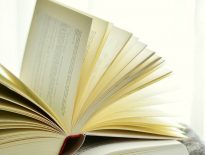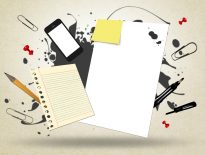Definition of Poetry
Poetry is a form of literature that is comprised of a particular rhythmic and metrical pattern. A poem is sometimes referred to as a verse; though verse can also be used to refer to a single line or set of lines (stanza) in a poem.
Differences Between Poetry and Prose
Poetry
- Poetry uses rhyme and rhythm.
- Poetry is known for few words.
- Poetry has lines and stanzas.
- Poetry uses figurative and rhythmical language.
- Poetry takes reading several times to understand the meaning.
Prose
- Prose does not use rhyme and rhythm.
- Prose employs many words.
- Prose has sentences and paragraphs.
- Prose uses natural and grammatical language.
- Prose takes reading once to understand the meaning.
Read – Writing a Good Piece: What Poets Should Know
Major Categories of Poetry
- Traditional poetry sticks to the rules of a regular meter and rhythm and observes rhyme. Most structured poems fall here. However, due to the difficulty that poets find themselves in trying to keep these rules. there are:
- Free verse is poetry that does not follow rhyme or have a regular meter or rhythm. In other words, this poetry is free from the regular patterns.
- Blank verse is poetry that follows a regular rhythm. It is written in iambic pentameter. However, this poetry does not always observe rhyme.
Four things to observe in a poem to evaluate its quality (ABCD)
Aesthetics
What is the form or structure of the poem? Do the lines seem to follow a certain pattern? Is it beautiful just by observing it even before you read? How arranged are the stanzas?
Brevity
Does the poem observe economy of words? What is the length of the lines? Is it too precise as to limit imagination or too long to over-suggest ideas and end up being boring?
Communication
Will the poem evoke any emotions to its readers? Can people apply the ideas in it? Does it communicate both a literal and interpretive meaning? Is there a major theme?
Depth
Is the language figurative? Does the poem have imagery? Is it creative with its presentation with poetic stylistic devices such as onomatopoeia, rhyme, assonance, alliteration, similes?
Elements or Features of Poetry
Meter – It is a stressed and unstressed syllabic pattern in a verse, or within the lines of a poem. A meter serves as a linguistic sound pattern for the lines giving poetry a rhythmical and melodious sound.
Rhyme – These are words that end with similar sounds at the end of lines in a poem. Lines with rhyme words at the end are referred to as rhyming lines. Words with similar end letters should not be confused for rhymes. If these are used it ends up being forced rhyme.
Rhythm – A pattern in a poem that is created with sounds and arrangement of words, lines and stanzas. Repetition of lines and meter, for example, create rhythm.
Form – This is the arrangement of words, lines, verses, rhymes, and other features. It helps to build the aesthetic (beauty) nature of a poem which differentiates it from prose.
Cadence – It is the flow of words in a poem; the rhythmic change in the inflexion of sounds from words being spoken and the smooth move from one line to the other created by them.
Line – A group of words that constitute the sentences in a poem. A single line is sometimes called a verse.
Stanza – A group of lines in a poem. Sometimes stanzas are also referred to as verses. A stanza with two lines is referred to as a couplet, with three lines a tercet, with four lines a quatrain, with five lines a quintet, with six lines a sestet, with seven lines a septet, and with eight lines an octave or octet.
Image – These are vivid mental pictures the poet creates through language. Every poem should be able to let the reader visualize the theme of the poem being addressed.
Theme – This is the general idea or message that each poem seeks to address to its readers. Themes vary from nature, love, mechanics, history, education, politics, etc. A good theme should evoke responses from readers such as laughter, sadness, crying, telling it out etc.
Tone – The tone of a poem is the attitude of the poem or the manner of the expression that the writer feels toward the theme, subject or audience of a poem. The tone helps to evoke the mood (the atmosphere) of the poem.
Mood – This is the feeling created by the poem in the emotions of the reader. It could be sad, tense, playful, welcoming, terrifying, lonely, gloomy, peaceful, joyous, cold, violent, captivating, strong, outright, disappointing, hopeful, suspenseful and so on.
A quick way to detect the tone and mood?
- Tone – How does the writer seem to have been feeling when writing the poem — formal, playful, clear, gloomy, humorous, resigned?
- Mood – What does the poem make you feel as the reader — joyous, suspense, sadness?
NB: The mood is for the reader; the tone is for the writer.
History of Poetry
Poetry as a verbal art
Poetry today is mostly known in written texts. However, this was not always the case. Most early societies had poetry as a verbal art. It was sung or recited and passed orally from generation to generation. Therefore, the earliest poetry existed in the form of music. To make it easier to remember early poets used repeated phrases.
The emergence of written poetry
With the development of writing, written poetry emerged. Most poems that were recorded included prayers, stories about religious matter, historical accounts, love songs, dirges and moral stories. For example, the Vedas are a large body originating from ancient India dating 1000-1500BC. The Bible also has poetic accounts in the book of Job, Psalms, Proverbs, Song of Songs etc. Actually, the first conversation of man and woman in the Bible was a poem:
This is now,
Bone of my bones
And flesh of my flesh
Earliest known poems
Some scholars believe that the poem titled ‘Tale of the Shipwrecked Sailor’ from Egypt as the oldest surviving poem (2500 B.C.E). However, some argue that the ‘Epic of the Gilgamesh’ (2100-1800 BC) from ancient Mesopotamia is the earliest known poem. Illiad and Odyssey (both Greek) are also some of the oldest known poems.
Earliest known poet
Enheduanna is the earliest known poet whose name has been recorded. She lived in the Sumerian city-state of Ur (23rd Century BC).
African Ancient Poetry
Performance Poetry dominated African societal traditions. This poetry was used in the theatrical ceremonies of the African socio-cultural, political and religious lives. In some cases, this was performed for entertainment was mostly accompanied with musical instruments. The Pyramid Texts (25BC) from Egypt and written on pyramid walls are some of the earliest written poetry in Africa.
(Wendy Belcher wrote about the existence of African literature in ancient times: https://wendybelcher.com/african-literature/early-african-literature-anthology/)
Modern Poetry
The development of modern poetry was attributed to Robert Frost, Wallace Stevens, and Anne Carson. Modern poetry came with the development of literacy that birthed lyrics that were meant to be sung. The lyrics were more personal and shorter poems compared to ancient poems. (Wikipedia)
Significance of Poetry in Societies
- Communication – Poetry addresses issues in the society. For example, some poems have been known to have caused dictatorial governments to put people in prison due to their liberation messages that condemn political ills.
- Music – Poetry is music. Most songs when recited will read like poetry. Everyone identifies with one type of music or the other. If you hear someone say they hate poetry, ask them if they also hate songs? Let them know songs are sung poems.
- Therapy – The art of putting words together in a unique way as poetry, helps release the internal emotional pressures. Most poets actually do this unconsciously. The same effect is received by readers, for example when a poem evokes happiness.
- Memory – Quick notes can be referred to as poetry due to their brevity. Poetically, we all do quick notes that we later expound further. Some people do personal journals which are done in poetic form.
- Brain development – The characteristics of poetry having hidden meanings and word patterns, helps the reader to grow their brain functions of understanding, memory and imagination and critical thinking.
- Vocabulary – Poetry helps both the writer and the reader increase their knowledge of words as they interact with the different vocabulary they employ or read in poetry.

Benny Wanjohi is a Kenyan poet who has written over 250 poems. He has published a poetry ebook and has written two more poetry books to be launched in June 2020. He is the founder of Friendswhowrite a group that brings together some of the most talented writers in Kenya. He runs a poetry mentor-ship program for upcoming poets across Africa.
Benny is the Coordinator of WSA-Kenya and a poetry editor for the WSA magazine. He participated in the 1st and 2nd editions of Writers Mingle held in Nairobi in September 2019 and March 2020. He sits in the Board of Trustees of the African Writers Development Trust.
Benny is a lover of Jesus Christ and all the good words and deeds he brought to humanity. When he is not writing poems he is probably talking about Jesus to friends or strangers.








This is a great job done👏
Just a critique, though this piece was very informative in teaching us about poetry I think it could’ve done with some illustrations of different poems that resemble the types of poetry Mr Wanjohi talked about. Since ‘Writers Space’ has featured a bucket load of them I think adding just a link to one of their poetry issues but detailing specifically which poems resemble said format could be helpful, particularly to new readers. Wonderful blog post nonetheless.
Thank you.
God’s blessing
Thank you so much David for taking time to read through. Your feedback is highly valued and the concerns are valid. However, due to the length of the lecture, we were not as keen to include examples but this is something that we will take note of in the future. We did hope the explanations given would be sufficient for the reader to take a further initiative to try to match poems with their right examples after going through the lecture. Do you know about our WSA academy? This is where we engage in a deep dive into such matters and you are welcome to join us upon meeting the necessary credentials. You can contact us on the same.
thank you so much for the work….The depth is what we really need to write home about…. I have understood Alot from it…